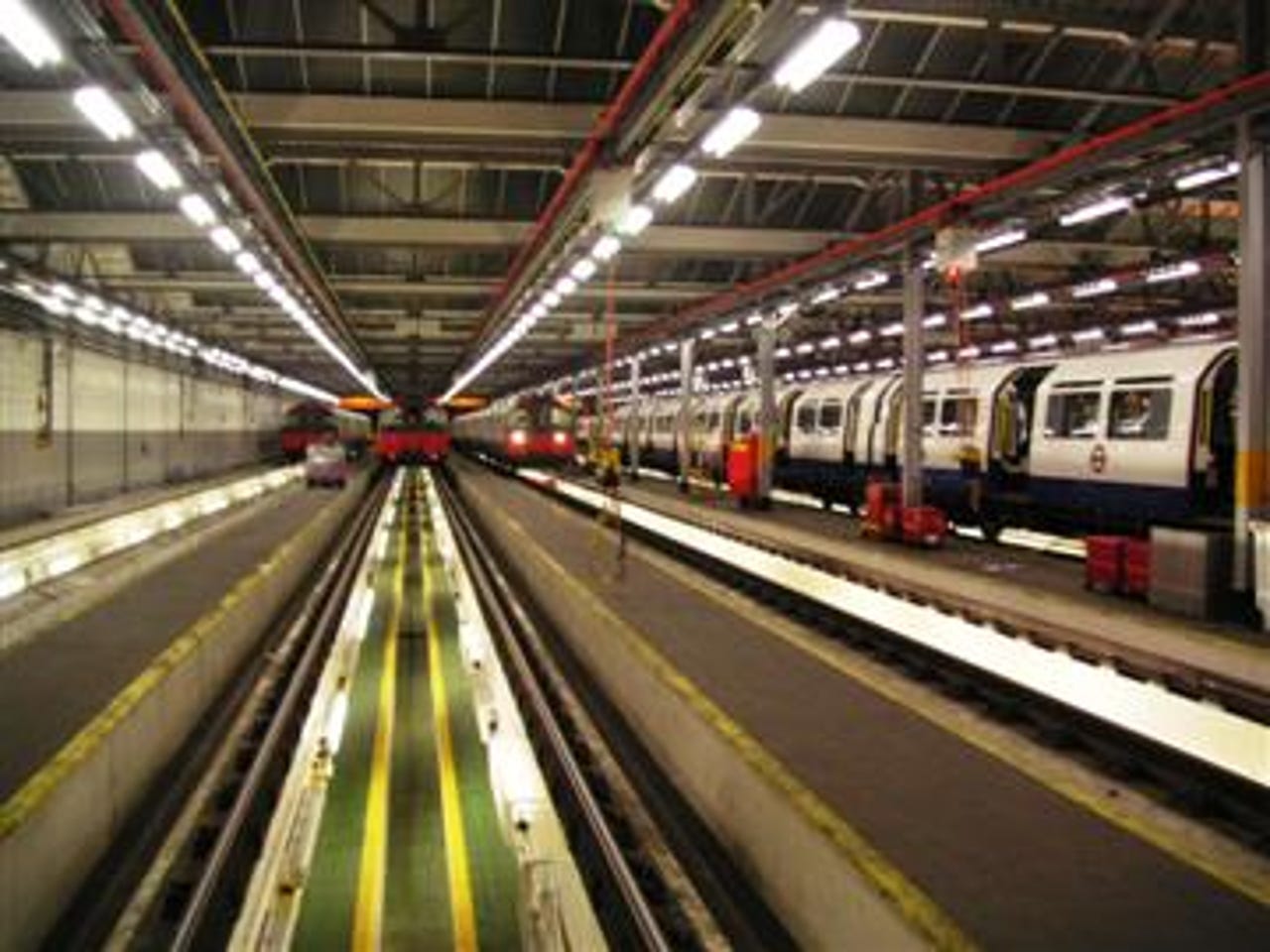Photos: RFID, tablets, handhelds - going down the Tube


The gadgets of the underground
Tube Lines is the consortium responsible for the maintenance and upgrade of all the infrastructure on the Jubilee, Northern and Piccadilly lines under a 30-year contract with London Underground.
Tube Lines is involved in a massive improvement programme, tripling investment and committing more than £4.4bn to improve the Jubilee, Northern and Piccadilly lines in the first seven-and-a-half years - the equivalent of spending almost £1.6m per day.
The consortium looks after 255 trains, 100 stations, 2,395 bridges and structures, 71 lifts, 227 escalators and more than 200 miles of track. It's keen to streamline its processes by using leading-edge technology and took silicon.com for an exclusive midnight tour of its maintenance operations to show off some of its gadgets.
This is the Cockfosters Piccadilly line depot where 46 trains are inspected in one night. The whole depot is covered by a secure wi-fi network.
Photo credit: Steve Ranger
This is one of the handhelds used by staff at the depot. They use the devices to log work orders using the wi-fi network and order parts, while the barcode scanner can be used when taking parts from the stores. Another version of the ruggedised, water- and oil-proof handheld contains a camera too. Tube Lines is also considering a trial of Skype using the handhelds.
Photo credit: Steve Ranger
Inside one of the trains being checked over in the Cockfosters depot in the middle of the night. Tube Lines is trialling RFID technology on a small number of Piccadilly line trains to see if it can help with monitoring when a train enters and leaves the depot. It is also using RFID on the train-washing machines at Stratford station.
Photo credit: Steve Ranger
silicon.com's Steve Ranger in the driver's seat. Fortunately there aren't any passengers. New signalling systems are planned on the Jubilee line by 2009, the Northern line by 2011 and the Piccadilly line by 2014, resulting in quicker journey times and improved reliability.
Photo credit: Steve Ranger
New tech is also being tested out on the tracks. This is Michael Stewart at Golders Green station modelling one of the ruggedised tablet PCs which the asset condition inspection team is testing at the moment. It is being used to record the location of faults spotted during the track inspection.
Photo credit: Steve Ranger
With the last passengers out of the station the power is turned off and the teams prepare for the night's work ahead of them. Every night of the year, around 600 Tube Lines employees and contractors are out on the railway ensuring it is fit and ready for service each morning.
Photo credit: Steve Ranger
Using the tablet to record faults found on the line during the inspection. The tablet uses the same application as the handhelds in the depot, and uses drop-down menus which means the information captured can be analysed more easily than free text.
Photo credit: Steve Ranger
The tablets replace a paper-based system, saving time for the teams at the end of a shift.
Photo credit: Steve Ranger
Taking measurements on the track during the night. The entire length of the Tube line is investigated like this every year.
Photo credit: Steve Ranger
This is one of the track markers, attached to a sleeper, which the teams currently use to help pinpoint the position of faults. The plan is to use GPS and GIS (geographic information system) instead which will be much more accurate. In areas where it isn't possible to use GPS - such as in tunnels - the plan is to use RFID to help identify places of interest more accurately.
Photo credit: Steve Ranger
The track at night.
Photo credit: Steve Ranger
The Tube Lines operation centre receives 150 to 200 fault calls per day - from signal failures to graffiti to animals on the line - managed by the staff using their helpdesk expert automation tool.
Photo credit: Tube Lines